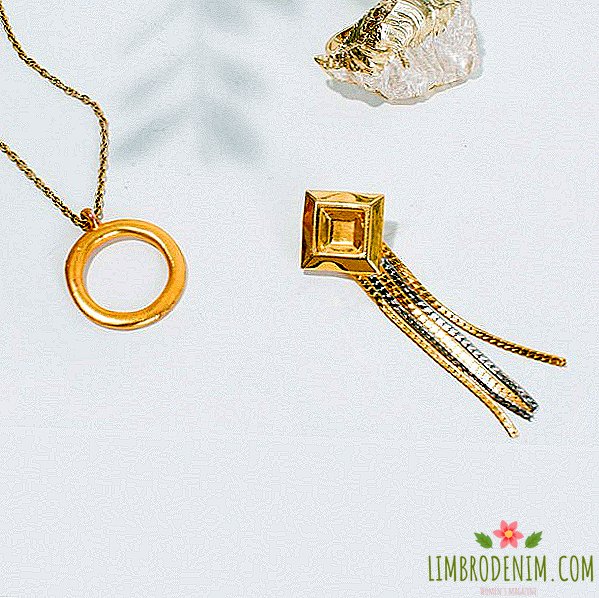Dressing Flight: Why there is no comfortable style "for airports"
2016 year. Girl in beige trousers, sunglasses and classic shoes with a contrasting toe with a very high heel goes to the airport. Behind the scenes - people in leggings, hoodie, sneakers and an inflatable cushion at the ready, busy with prosaic affairs: run to the front desk, find the flight on the scoreboard, meet the mother from vacation. Among this motley and lively environment, she looks like a person for whom a flight is just an excuse to take a bag larger than her. In April, British Airways, together with the editor and stylist of Vanity Fair, Elizabeth Salzman, recognized this girl, designer Victoria Beckham, as the most "stylish traveler" in the world.
It would seem that the fashion for the "new comfort" and okolosportivny style, which in our time is more than fully integrated into everyday life, knows no bounds. Nevertheless, we are still being offered the image of the most fashionable passenger not in a huge down jacket-blanket or multi-layered dress, in which it is not terrible to sit on the floor in the waiting room, but in a light coat and high heels, which dedication causes a mixture of admiration and bewilderment. What should we do with this image that does not correlate in any way with the spirit of the times, or with all of us? Look at him like in a museum? Try to match? Is it sad to shoulder a backpack, bending under the burden of your own "non-first-class"?

Bags of rigid form, pearls, sheath-dresses, fur coats and wide-brimmed hats - it is interesting to look at old photographs of people at airports and, importantly, is indicative of an understanding of the fashion of a decade. For a long time, regular flights, especially over long distances, were inaccessible to the majority: a ticket from London to Sydney cost about 30 weekly wages, today in the Western world - about one. Therefore, until 1969, when the Boeing 647 began its regular flights, people who could afford to fly were either very rich or very famous (or both).
This affected the general understanding of "airplane fashion": the passengers flew in lacquered boots and tablet-caps not only because of their status, but also because they didn’t have to carry the suitcase with a margin and the cat in the carry. Not to mention the gossip heroes: movie stars, politicians and other inhabitants of heaven have always sought to be at their best. For other well-off travelers, the flight was also an important event, for which it was worth preparing in advance.

As soon as the world began to fly en masse and regularly over long distances, the question of a comfortable dress code also arose.
In the 60s and early 70s, air travel was surrounded by a holiday halo with a touch of futurism: airlines invited famous designers and artists like Emilio Pucci or Alexander Calder to design logos, decorate waiting rooms, forms for flight attendants (some sets even included a transparent helmet on a case of meeting guests before the ramp in rainy weather) and sometimes even the interiors of the planes themselves. Particularly privileged could enjoy the journey of one hundred percent: they had live concerts and luxurious full-size beds at their disposal. Owners of a first-class ticket could not deny themselves anything on earth or in the air, including they did not need to think about the practicality of appearance.
However, in the 70s, which are considered to be the golden decade in the world of civil aviation, the rules of the game began to change: the passenger traffic began to grow rapidly, and the flight - to become a routine. In the planes themselves, now we need to save space: in the showrooms there is much less designer thought, but more opportunities for carrying the largest number of people. As soon as the world began to fly en masse and regularly over long distances (and after the flights also flee to meetings), the question of a comfortable dress code also arose. Yes, in the first class, pearls still sparkled and soup souls were poured, but in the economy they, definitely, preferred trousers and non-sweeping materials.


The paradox is that since the 70s, the attitude to the aircraft dress code did not seem to have changed. The role of the “ideal passenger” is still played by the rich or famous: with an expensive suitcase, in a “semi-relaxed” set of clothes, with heels and preferably cashmere pashmina in hand. The segment of goods for travelers, as if by inertia, is not for everyone, emphasizing its premium nature. Local brands and mass-market lines almost never enter this territory - at least they do not sell the image of the traveler.
Product placement, gloss and celebrity culture do their work: in magazines, tabloids and movies we see elegant people coming out of a private plane with suitcases of legendary brands, and not with ergonomic backpacks and bags. Therefore, it turns out that in this segment still dominates the "heavy suite", and everyone else is invited to collect their own "travel kit" from which you have to either imitate the premium consumption. It is thanks to these two extremes, passing under the code names "business" and "economy", and two polar, but equally popular aircraft dress codes were formed: either jeans that are "not sorry", slim and ballet flats, or heels and styling.

99% of passengers do not have and never will have a travel set of Louis Vuitton for 60 thousand dollars, simply because most of us do not need it
As usual, all the people who meet at any modern airport are left behind, and one thing unites them - the desire to fly with comfort. 99% of them do not have and will never have a set of 60 thousand dollars for Louis Vuitton, which includes a special bag for hats, a jewelry box, a whole “wardrobe” for clothes, a wardrobe bag, suitcases and other things that are so necessary to travel - just because most of us don't need it. Dear brands selling a certain lifestyle do not sell the image of a traveler in the most comfortable clothes, creating a sense of security; minimalistic and free. Nevertheless, it is.
Muji Japanese, known for their brevity and love for details, offer everything you need for travel and flight: folding toothbrushes, eye patches, neck pillows, vacuum bags - especially so that the suitcase includes as much as possible. These are relatively inexpensive and versatile items that are popular with anyone who wants to make their flight as easy as possible. Another example of “Japanese restraint” is the Master-Piece brand, whose messengers, backpacks, wardrobe trunks, laptop covers are loved by Highsnobiety and American GQ, and all giants of online retail from SSENSE to East Dane sell. It also happens that the brand is not focused solely on travelers, such as the Otis Batterbee - but it is here that you can find elegant sleep masks (as far as this can be applied to this object), soft slippers and special pillows. The young brand Stow doesn’t advertise itself either, although their modest passport covers, luggage tags and transparent pencil cases are worthy of special mention in the context of travel items.

The “humane things for flight” niche was tried to be made by Kanye West together with the French A.P.C., suggesting a “airport sweater” in the collaboration line. True, his wife still prefers narrow dresses and boots for flights, supporting the glossy interpretation of the idea of "being stylish in any conditions." On the other hand, the rules that “you should not choose tight skirts” for a flight or “it is better to make a choice in favor of a flat sole” do not offer specific ready-made solutions useful in the pre-flight heat.
How to choose a set of irreplaceable things, which will be both pleasant and convenient, remains a question that no one has time to think about before the trip. There is no adequate example in the "airplane mode" - no one transmits this to us. In a world where the concept of a dress code has practically disappeared, some people still continue to try to “fit” with all their might, others choose a set of things that come handy. At the same time, neither those nor the others can enjoy a pleasant start to the rest - and this would seem to be a small problem, which concerns passengers of about one hundred thousand flights a day.
Photo: Getty Images, Paule Ka, Rimowa, Globe-Trotter





